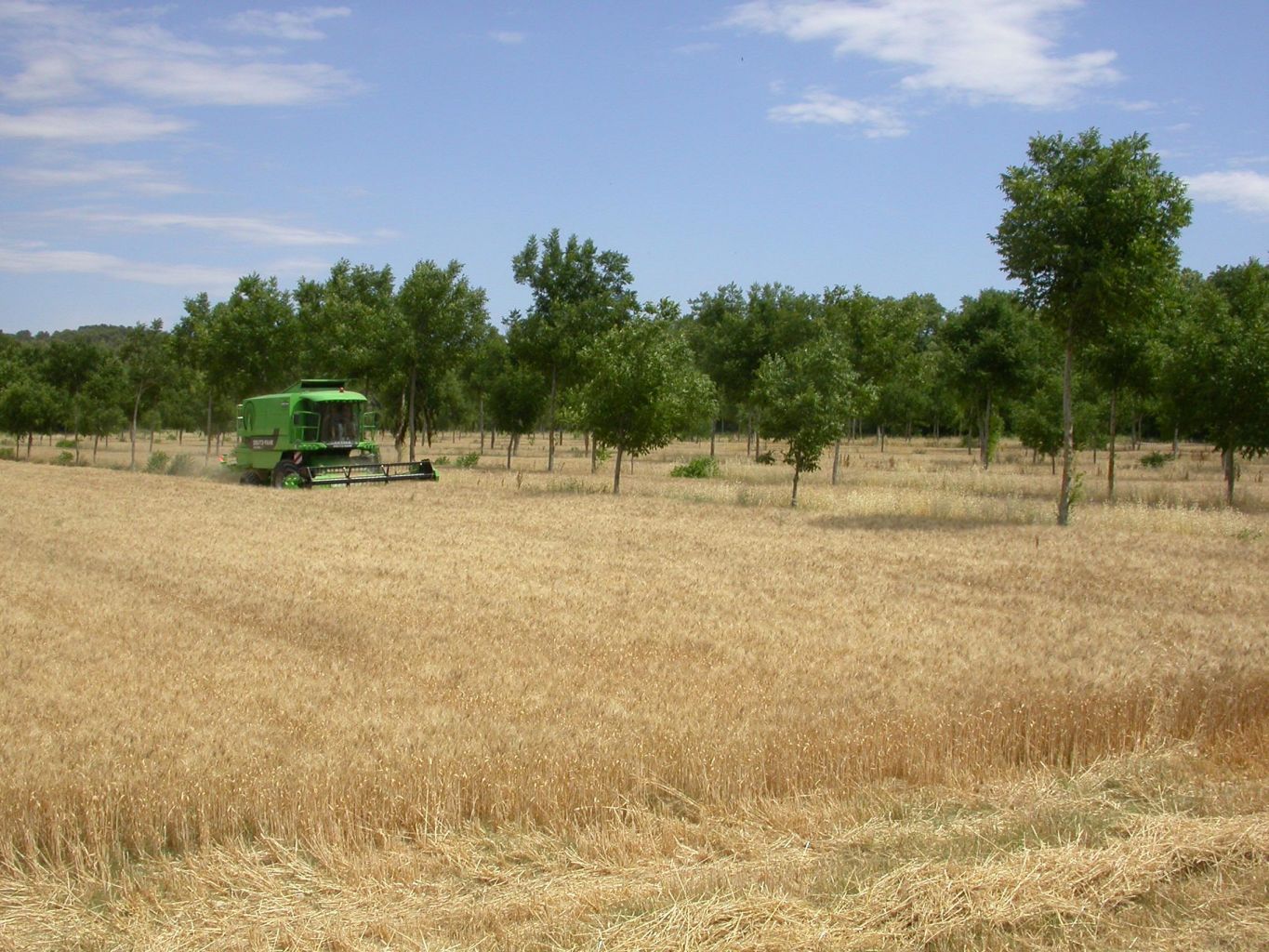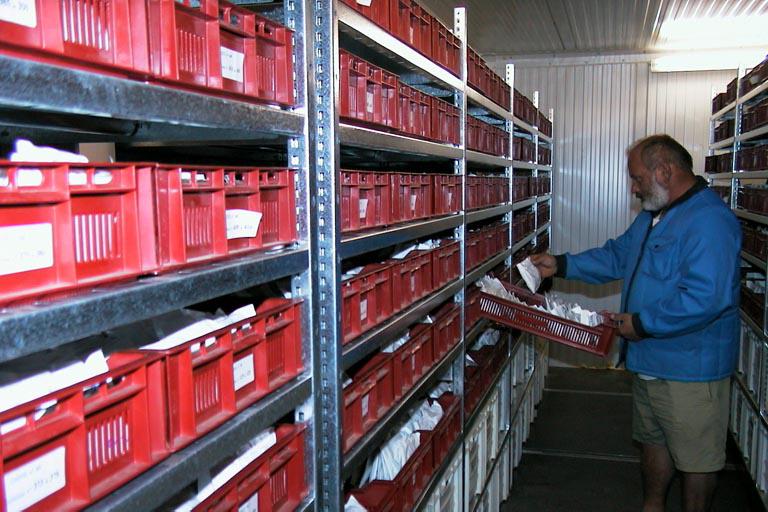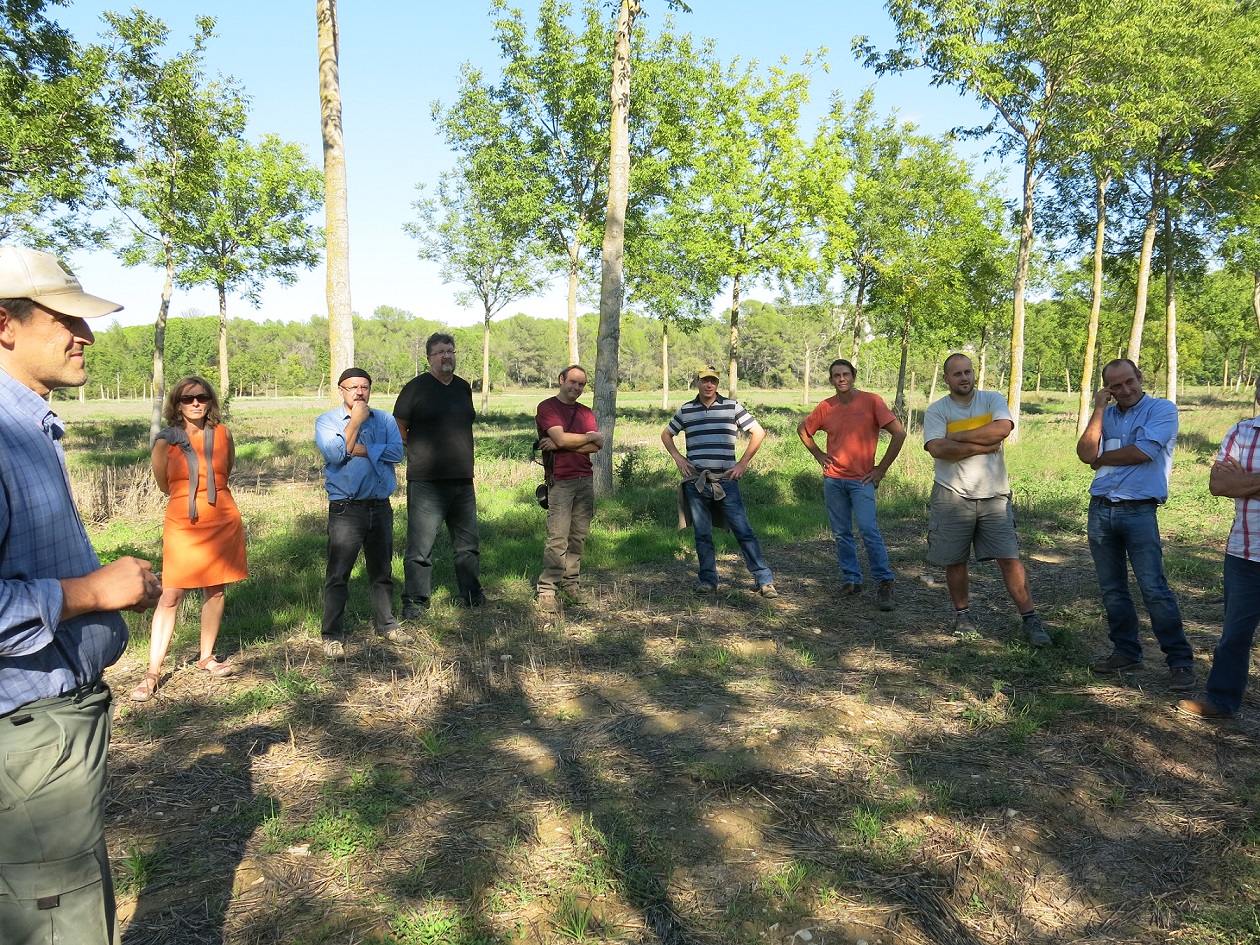2 October 2014
2 October 2014. Participatory plant breeding for cultivars adapted to shade
Modern wheat varieties have been selected under monoculture conditions, and hence they may not be varieties most appropriate for use in silvoarable agroforestry where the wheat grows under the shade of trees. Using shade tolerant varieties might increase the benefits that can be gained from agroforestry, increasing the efficiency of this system. Hence research is being undertaken, as part of a French stakeholder group in AGFORWARD, on the breeding and selection of wheat varieties adapted to agroforestry conditions in a Mediterranean climate.

Figure 1. Light patterns in the agroforestry system (back of picture) are different from that in a monoculture system (front of picture).
This breeding program is original because farmers and food industry experts are involved in each step of the process. This includes goal setting, the definition of criteria to evaluate varietal performance, choice of parent genotypes for the crosses, and varietal evaluation in farmers’ fields.
An initial stakeholder meeting took place at Melgueil, near Montpellier in France, on 2 October 2014. The objectives of the meeting were to discuss phenotypic traits (i.e. characteristics of wheat varieties that can be observed) that are relevant for cultivation of wheat in agroforestry systems, and to design the first year of field experiments to screen possible parents for the breeding program.
Figure 2 The meeting took place both indoors and directly in the field, to foster discussions directly relevant to the experimental conditions.
The meeting was organised by Dominique Desclaux, Director of the Melgueil Experimental Station. The station specializes in plant breeding and hosts the French national gene banks for maize, wheat, Medicago truncatula and olive trees.
Following the first meeting, accessions of durum wheat (the wheat species which is used to make pasta) have been selected from the gene bank and each will be sown in both agroforestry and monoculture conditions to evaluate their shade tolerance. The best candidates, or candidates having complementary desirable traits, will be selected and multiplied to be further tested in farmers’ fields

Figure 3. In the gene bank, plants of different types (called accessions) are kept as seeds and regularly renewed by growing them and harvesting the seeds to ensure they remain viable
